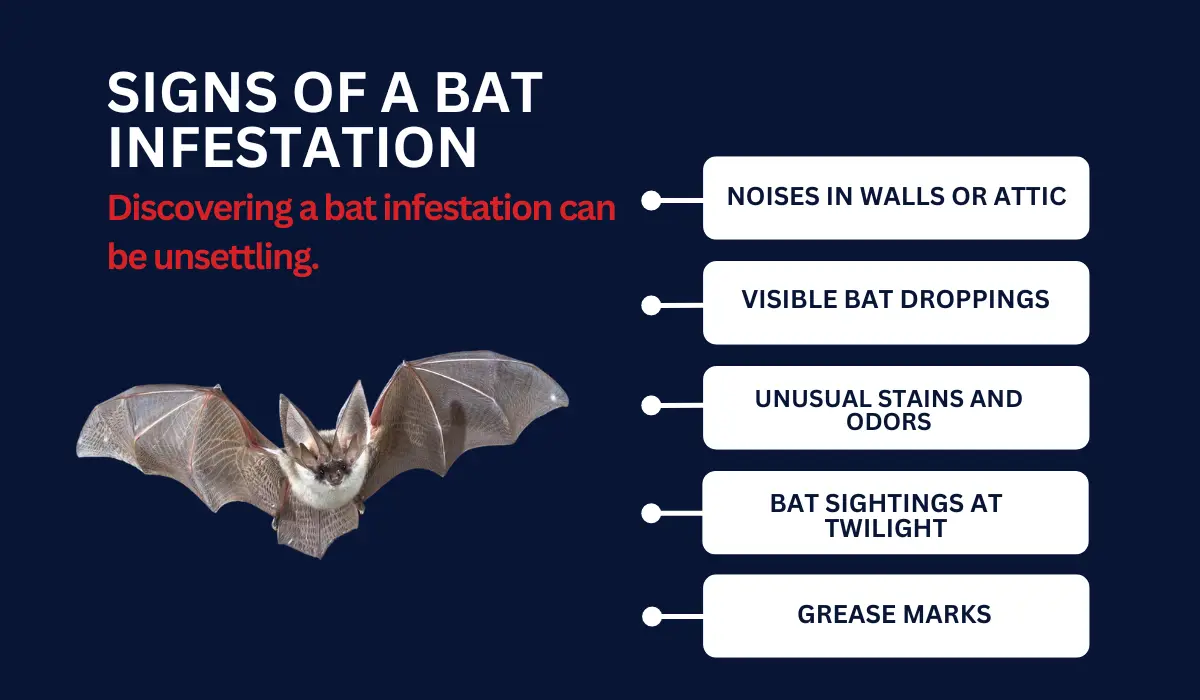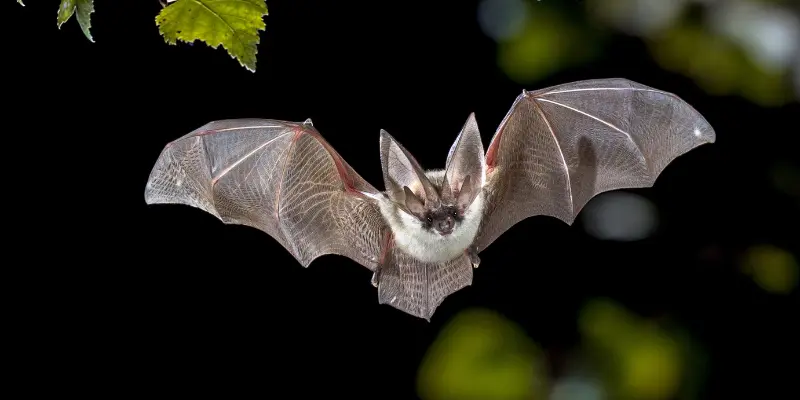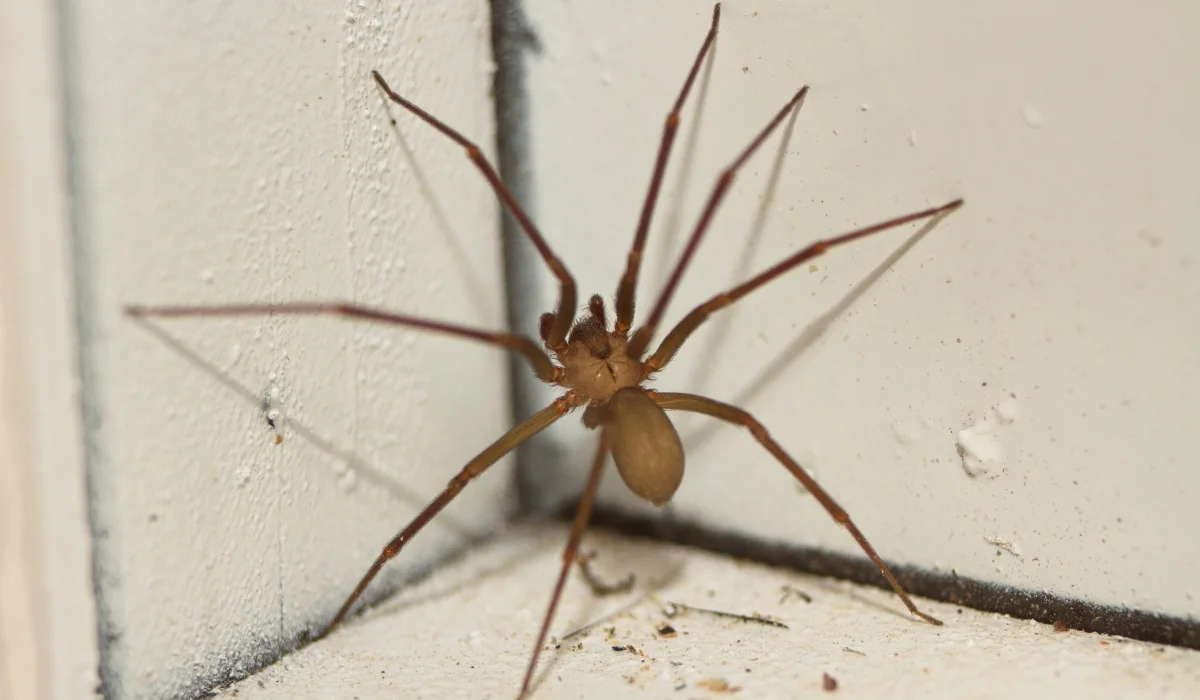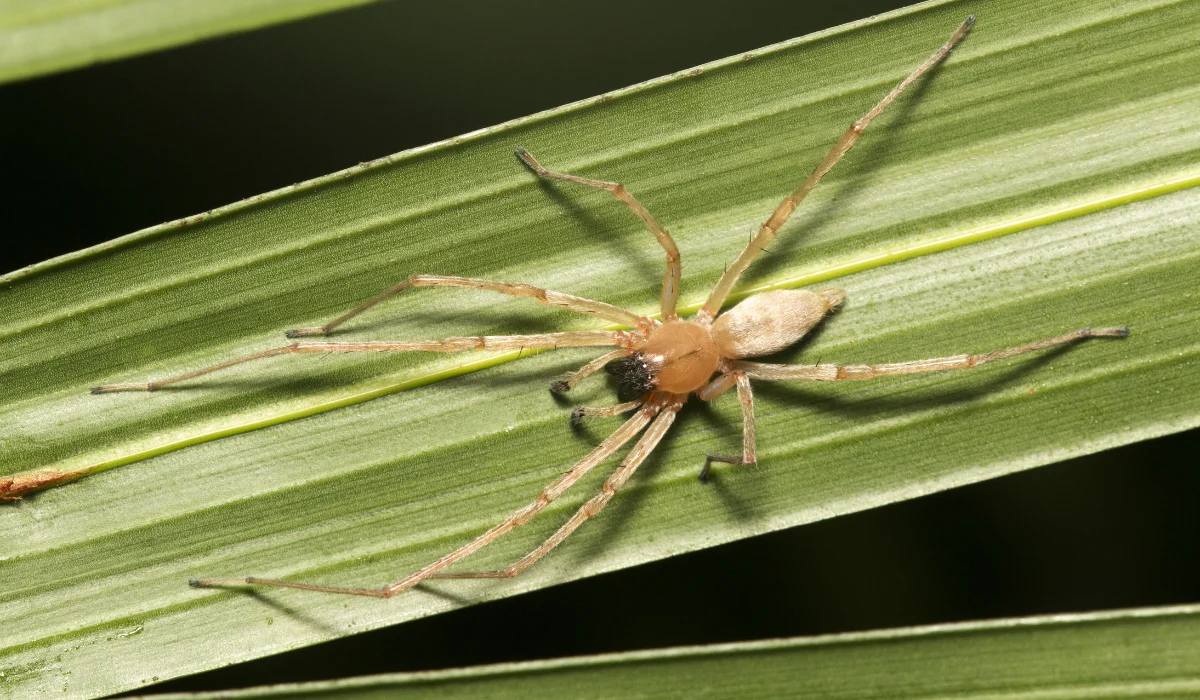Bats are a fascinating part of Louisiana’s diverse wildlife. Across the bayous, forests, and urban areas of the Pelican State, these nocturnal creatures play a critical role in pest control and pollination.
However, you probably don’t want them as roommates in your attic, and we get that. Keep reading to learn more about bats, their habitat, and what to do if they’ve claimed your home as theirs.
Key Takeaways
- Louisiana is a hotspot for a diverse range of bat species, including some that are unique to the region and others that are seldom seen, like vampire bats.
- Habitat loss and white-nose syndrome pose significant threats to bats in Louisiana, with several species now considered vulnerable or endangered.
- Bats in Louisiana adapt to various roosting environments, from natural settings like caves and trees to urban areas like attics. Their diet plays a crucial role in pest control.
- Effective bat conservation efforts in Louisiana include installing bat houses, maintaining natural habitats, and seeking professional pest control for infestations.
BATS IN LOUISIANA
Louisiana is home to a rich variety of bat species. Some of them are endemic to the region, and others, like the vampire bats of Mexico, are rare to encounter.
Louisiana’s landscapes foster habitat for over a dozen species of bats. Here are some of the common types of bats you may come across.
| Common Name | Scientific Name | Notable Characteristics |
| Mexican free-tailed bat | Tadarida brasiliensis | Also known as the Brazilian free-tailed bat, it has long, narrow wings suitable for fast, agile flight. |
| Big brown bat | Eptesicus fuscus | Adaptable and found in various habitats, including urban areas. |
| Evening bat | Nycticeius humeralis | Prefers forested areas and often roosts in buildings or trees. |
| Hoary bat | Lasiurus cinereus | Recognizable by its frosted appearance and large size. |
| Eastern red bat | Lasiurus borealis | Solitary and roosts in trees, with striking red to yellow fur. |
| Seminole bat | Lasiurus seminolus | Locally known as the Yellow bat, it is often found in pine woods and is recognizable by its mahogany-red fur. |
| Southeastern myotis bat | Myotis austroriparius | Prefers wetlands and is commonly found in swamps and marshes. |
| Silver-haired bat | Lasionycteris noctivagans | Considered transient rather than a common species, seen when they migrate. |
Endangered and Protected Species
Some bat species in Louisiana are threatened, mainly due to habitat loss and white-nose syndrome.
Here are some vulnerable species that the state has taken measures to protect.
| Common Name | Conservation Status | Primary Threats |
| Rafinesque’s big-eared bat | Near Threatened | Habitat destruction and human disturbance. |
| Tri-colored bat (Eastern pipistrelle) | Vulnerable | Primarily threatened by white-nose syndrome. |
| Little brown bat | Endangered | Severe declines due to white-nose syndrome. |
| Southeastern myotis | Not officially listed, conservation dependent | Reliant on specific roosting habitats, vulnerable to disturbance. |
HABITATS AND ROOSTING BEHAVIOR
Bats in Louisiana have adapted to various environments for their roosting needs.
They utilize natural and artificial structures to support their population and feeding activities.
Natural Roosting Sites
Bats across Louisiana seek natural structures to establish their roosts, which are essential for survival and reproductive success.
Here are some critical natural roosting sites:
- Caves: Caves provide a stable environment with ideal humidity and temperature for hibernation and maternity colonies.
- Trees: Both living and dead trees offer cavities and spaces under the bark where bats can roost and rear their young.
- Wetlands: A lush source of insects, wetlands offer bats ample feeding opportunities, and surrounding trees and plants serve as roosts.
- Spanish Moss: Bats often roost in the draping Spanish moss that adorns many trees in Louisiana, as it offers good shelter and camouflage.
Urban and Suburban Roosts
The expansion of urban and suburban areas in Louisiana has led bats to find roosts closer to human populations.
Here are some considerations for coexisting with bats in urbanized settings:
- Attics and Buildings: Bats find attics and crevices in buildings suitable for roosting due to their warmth and protection.
- Challenges: While bats are beneficial for insect control, the accumulation of guano can be a concern in urban roosts.
- Coexistence: Integrating bat houses and education about bats’ importance can promote a harmonious relationship between humans and bats.
- Benefits: Having bats nearby can help control insect populations around homes and gardens.
BAT DIET
Louisiana bats predominantly feed at night, using their keen sense of echolocation to track down various insects.
These insectivorous flying mammals significantly impact local ecosystems by controlling insect populations, such as:
- Mosquitoes
- Beetles
- Moths
- Flies
- Mayflies
SIGNS OF A BAT INFESTATION

Discovering a bat infestation can be unsettling. If you’re in Louisiana, here are some telltale signs that bats may have taken up residence in your home:
- Noises in Walls or Attic: Scratching, squeaking, or crawling sounds, especially at dusk or dawn, can indicate bats are moving within your home.
- Visible Bat Droppings: You may find accumulations of bat guano, which looks like rodent droppings but can crumble into a powder, around your home, especially near entry points or in the attic.
- Unusual Stains and Odors: Stains on the exterior of your home or a strong, musky odor in attics or walls from guano and urine.
- Bat Sightings at Twilight: Seeing bats fly out of your home at dusk or return at dawn is a clear sign of infestation.
- Grease Marks: Bats leave behind grease and dirt marks as they enter and exit a hole, which can help you identify their entry points.
Related: What Noise Do Bats Make?
CONTROLLING A BAT INFESTATION
Dealing with a bat infestation requires a careful and humane approach. Here are effective methods to control and prevent bats from taking up residence in your home:
| Method | Description |
| Exclusion Devices | Install bat exclusion devices, like one-way doors, that allow bats to leave but prevent them from re-entering. |
| Seal Entry Points | After ensuring all bats have vacated, seal off entry points with high-quality materials to prevent future re-entry. |
| Bat Houses | Encourage bats to relocate by installing bat houses near your property. |
| Natural Repellents | Use natural repellents such as mothballs or peppermint oil in areas where bats are known to roost. |
| Maintenance and Repair | Regularly inspect your home for signs of wear and tear that could invite bats and other wildlife. |
| Lighting | Install bright lights in attics or other potential roosting spots to discourage bats from settling in. |
WHEN TO CALL THE BAT EXPERTS
If you stumble across a fluttery friend inside your Baton Rouge home, it’s time to give a professional pest control company. You should look out for these winged guests in spaces where they shouldn’t be hanging out—like the living room!
Wherever you’re in Louisiana, seeking expert help should be easy. For immediate intervention for a severe infestation, let Lajaunie’s bat control specialists tailor a solution that’s right for your home.
For more information about the areas we service, visit our location page.
Related: Do Bats in Louisiana Bite? Here’s What to Know
Related: Do Bats Hibernate?
 By: LaJaunie's Pest Control
By: LaJaunie's Pest Control 


